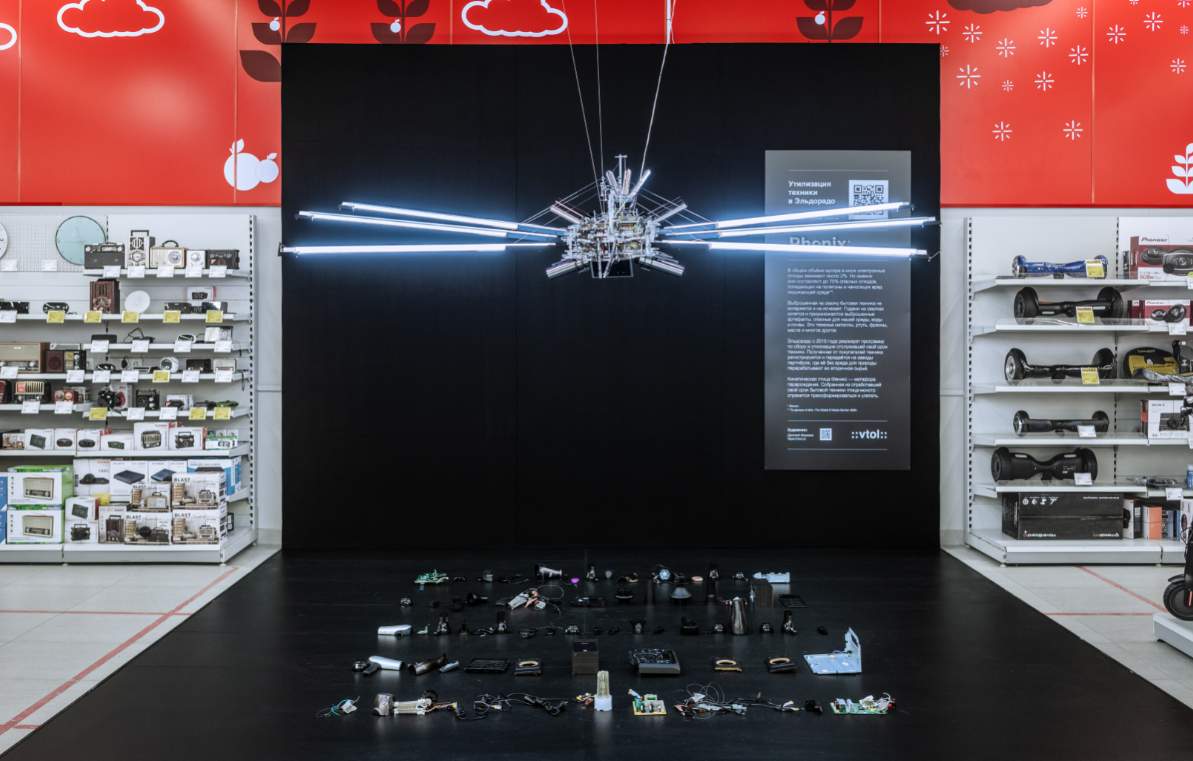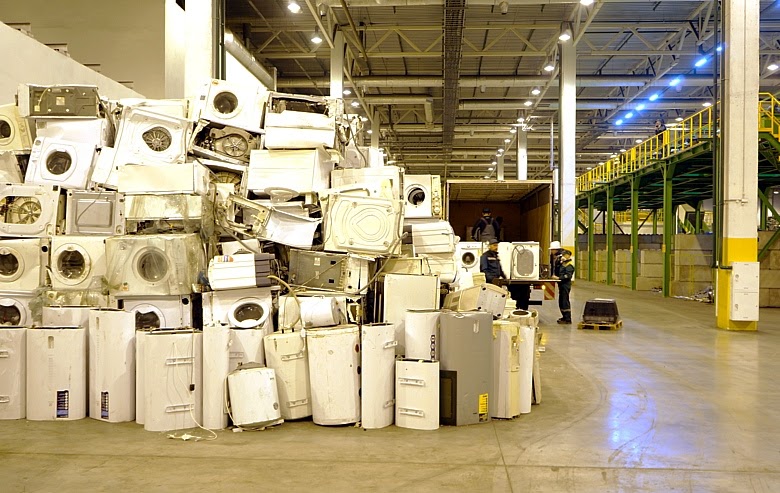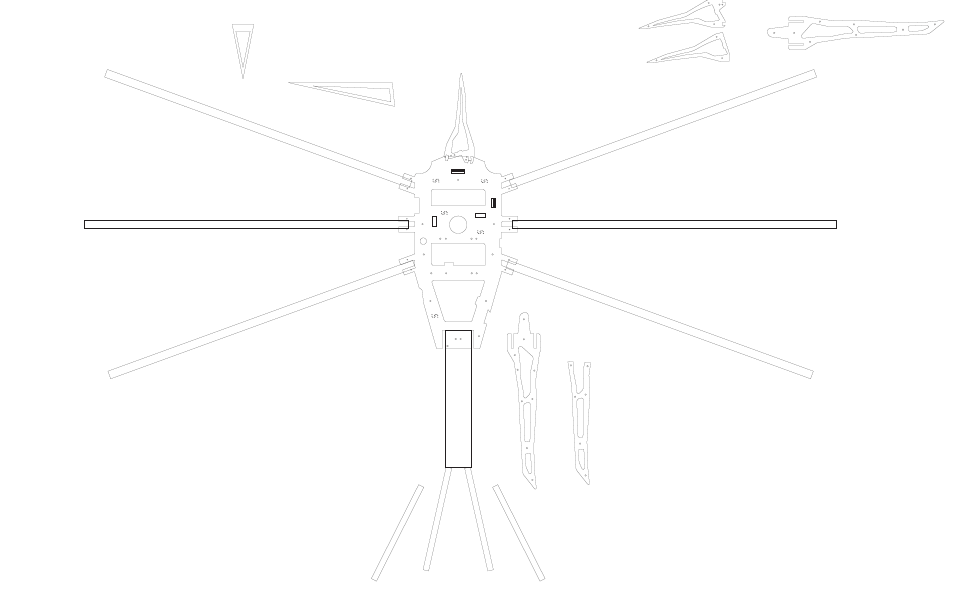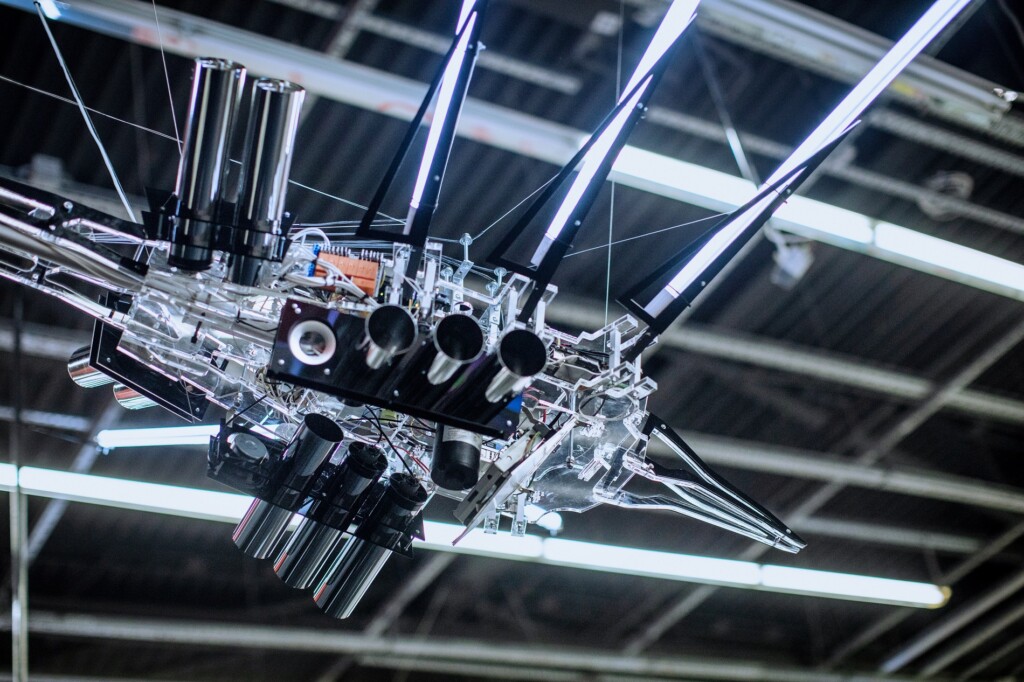
The problem of recycling electronic waste today cannot be denied. However, if large-scale initiatives to reduce the harmful effects of old technology on the environment require deep and detailed elaboration and overcoming a whole range of obstacles, creative people offer their own way of disposal.
Today we will talk about how artists manage to give "new life" to old pieces of plastic and metal, and in particular, about the history of the revival of the Phoenix bird from equipment that has fallen into disrepair, which can be seen with your own eyes in the Eldorado store in Moscow on Ryazansky prospect.

To begin with, garbage that nature cannot handle is a huge problem. According to GreenPeace Russia, about 20 cubic meters of water are sent to landfills every minute. m of plastic, and the volume of its processing on an industrial scale is still small and does not exceed 14% of all plastic waste.
But caring creative people find a new life for plastic and create something incredible out of it. For example, the Dutchman Theo Jansen has been working on the construction of amazing "creatures" for several decades (this is what he calls his creations).

These are giant objects made from plastic tubes, bottles, electrical tape and other debris that are propelled by the force of the wind. The so-called animaris get their "second life" on the deserted northern beaches of Denmark, where they move by the force of the wind, surprising tourists. Experts agree that this is real creativity, especially considering that the direction of "kinetics" has been present in the field of art for about a hundred years.
Phenix from home appliances

But for all the importance of recycling plastic, do not forget about other types of waste. For example, according to various sources, e-waste makes up only about 2% of the volume of solid waste in the world, but it accounts for up to 70% of hazardous substances that end up in landfills. Only a comprehensive effort by all market participants can change this situation and reduce the negative impact of e-waste.
That is why the M.Video and Eldorado chains have been implementing a project on environmentally friendly recycling for two years now, offering consumers to hand over unnecessary equipment for recycling at any time free of charge. During this time, more than 125,000 units of equipment weighing 1,300 tons were sent to the country's largest recycling plants.

Following the trends of Recycled Art, in 2021 some of these devices were really revived in the form of "Phoenix", assembled by the famous media artist Dmitry Morozov, who works under the pseudonym :: vtol ::. Using a variety of technical devices, the author created a kinetic exposition for Eldorado in the form of a bird with a wingspan of 2.75 meters.

Phenix was installed in a special area in the Eldorado store in the Gorod shopping center (Ryazanskiy prospect, 2, building 2.). It hovered over a pile of unused parts so that viewers could see that Phenix was revived from technology that was ready for recycling. As conceived by the artist, this was to give the installation additional depth and meaning.
Interestingly, Phenix is not just a collection of parts from old hair dryers, speakers, speakers, monitors and home appliance motors.
The artist made it "alive": sensors are used to recognize the presence of a person, and drives and LED lamps allow the mystical bird to flap its wings and shine in different colors. I must say that the impression from contact with such an installation really remains vivid.
"Pure flight of fantasy"
Artist :: vtol :: (whose real name is Dmitry Morozov ), has been working in the field of contemporary art for over 10 years. He creates original objects - he uses electronics in his work, works with sounds and mechanics, designs hybrid systems. It was his specialization that became the reason for the collaboration with Eldorado on Recycled Art.

Cooperation between Dmitry Morozov and "Eldorado" began with an idea and a large pile of non-working electronic junk. The artist was not given any framework, and he worked, focusing exclusively on his creative impulse.
“A lot of very different ideas came to my mind, but I decided to try to make Phoenix in order to show that waste can become something more holistic and useful,” Dmitry said. - Yes, the phoenix bird is a simple and recognizable image, it is often used. But I wanted to make this very image, to emphasize the second life of the recycled equipment. "
Three stages of design
Dmitry said that at first he painted the image in Illustrator in different planes, outlined the details that needed laser cutting. As a result, both a ready-made image and drawings for work appeared immediately. Then he assembled a finished sketch from parts, but in a two-dimensional plane - why waste energy on 3D modeling, if the final look is not yet clear.

Then the artist thought over the image in his head and began to draw the Phoenix, taking into account the available details - hair dryers, motors, parts of electronics cases.

The third stage is adjustment. At this stage, the assembly of the project "in the flesh" took place. And, as Dmitry noted, many factors from real life are taken into account here. It happens that some objects look better from other plastic, and it happens that some parts do not connect as originally calculated.

Make Phoenix Alive
Simple microcontrollers helped Dmitry breathe "life" into the installation. The bird was equipped with motion sensors, the data from which are fed to the microcontroller. He also controls sound and light, determines the movements of the wings and head of the bird.

Despite the fact that Dmitry is an art critic by education, the artist claims that it is not difficult to do all this, and such an installation does not require deep engineering skills: “You can find everything on the Internet, use Arduino or Raspberry PI,” he said. - An artist should not be far from technology - this is an outdated stereotype. Now no one bothers to use technology as additional means of expression, because all information is in the public domain! "
Recycled everything
The problem of recycling waste, including plastic and technical parts, remains an extremely acute topic. However, the creation of such installations not only helps to dispose of several hair dryers, cases and motors, but also demonstrates to people that their old household appliances can not just lie in a landfill, but become part of something larger.

We hope that Phenix will further raise awareness of the need to responsibly use and recycle electronics. Our approach allows every kettle or headphones handed over by customers to be registered in the IT system and traced back to the recycling plant in order to be sure that they will not end up in a landfill, but will be disassembled and recycled.